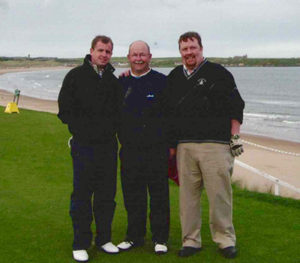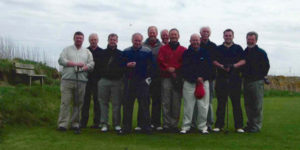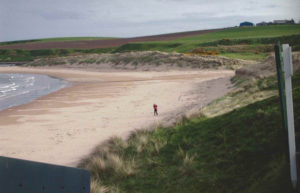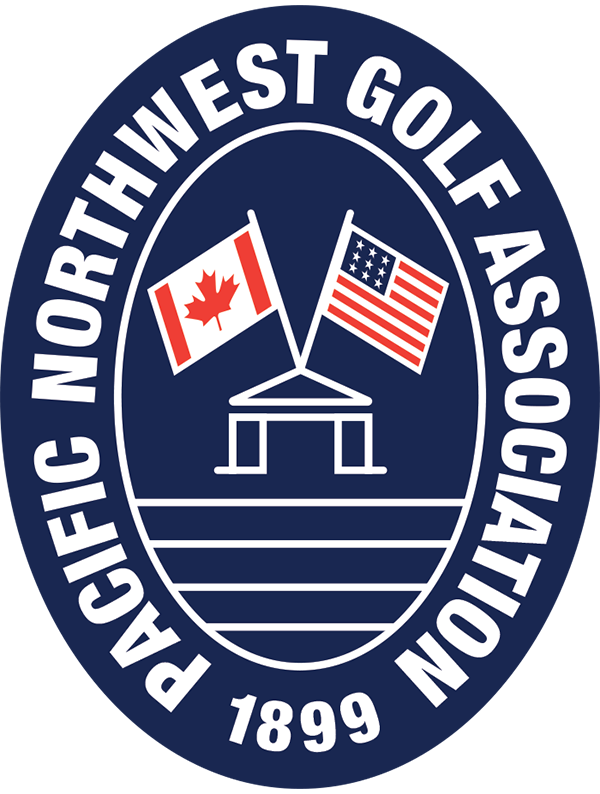How to Play Golf with the Locals
by Jeff Tolman
Over the past 20 years I have had the good fortune to journey to Ireland and Scotland many times, to play some of the world’s most famous courses as well as some terrific “hidden gems.” The most fun, though, has been playing with local golfers – getting local flavor and the local history from those who live it every day.

I have five different experiences and suggestions on how to play with the locals: tournaments, open competitions, multi-course events, challenging local golfers, and asking the club professional to set you up with some club members.
One-Course Tournaments
Twice I have had the good fortune to journey to Royal Dornoch in the Scottish Highlands and play in the Carnegie Shield. The handicap limit is 21. Entries come out in late January or early February for the mid-August competition. The entry fee is around 160 pounds for a guaranteed three rounds of golf. There are two divisions (normally below and above a 10 handicap). Two rounds of stroke play determine the golfers who advance to single-elimination match play. Those players who don’t make match-play get a fun Stableford event at nearby Golspie Golf Club. Royal Dornoch is a brilliant course, currently ranked No. 2 in the world.
On the northeast coast of Scotland, Cruden Bay Golf Club hosts a mid-July four-day Challenge Cup for around 100 pounds. Two rounds of stroke play with match play for the top qualifiers.

While there, don’t overlook the secondary courses these major venues have. Royal Dornoch‘s Struie and Cruden Bay’s St. Olaf courses are wonderful and much easier to get onto than the main courses.
Open Weeks
Virtually every course in Scotland and Ireland has one or two “open” weeks in the summer. During these periods the clubs have daily competitions and reduced-rate golf. Check the individual courses’ websites for the open dates. I played an “open” on Royal Tara just north of Dublin with three delightful “horse men,” who owned or trained Irish racehorses. Good company on a nice parkland course.
Multi-Course, Multi-Day Competitions
Five or six times I have played in the West Coast Challenge, three-person-team, four-day, four-course Stableford event in northwest Ireland. The event begins on the first Monday in September and costs about 135 euros to play two of Ireland’s top courses – Enniscrone and Donegal – a challenging Bundoran track, and my favorite golf course on the planet, Strandhill.
Strandhill’s 13th hole is a blind tee shot, to a hidden fairway, then a second shot between two dunes protecting the small green. It is memorable. My office screensaver.
In the Challenge, your three-player team is connected with two other teams. Each day you play with different members of the other, connected teams. For three years my team played with a wonderful group from Greenore Golf Club, over on the east coast of Ireland. Kevin Maguire, Nobby Quinn, Jimmie and Martin provided constant entertainment and joy. And, they are very good golfers. You don’t need to bring a full team. One year an Australian golfer (now my dear friend) Laurie Wales entered as a single and was placed on a team connected with my group. The first time I played the West Coast Challenge there was just me and my friend Pete Crane traveling in County Donegal. The tournament set us up with Sligo postal worker Wally Walpole to complete our team.

Other multi-course events include the Pat Mulcare Am-Am, a mid-August, four-person team, two-day Stableford on two highly rated courses – Tralee and Ballybunion. The entry fee is around 100 euros per player.
In July each year, the Atlantic Coast Challenge, a three-day, three-player-team Stableford event over three tough-but-brilliant courses – Carne Golf Links, Enniscrone and County Sligo – takes place. The courses are very difficult. Don’t plan to shoot your handicap. Plan on having a golf adventure you’ll talk about forever.
Ireland’s biggest amateur tournament is the Causeway Coast, drawing well over 1,000 golfers annually in early June. For the 230-pound entry fee a golfer plays Ballyliffin (Old), Castlerock, Royal Portrush (Valley) and Ballycastle. My recollection is that the event lasts five days with each team having one day off during the event.
In May, the Donegal Links Classic entails Rosapenna, Portsalon and Ballyliffin. These are three wonderful and challenging courses, on which four-player teams compete with the three best scores counting toward the competition scores. The entry fee is about 155 euros.
April brings the Down Spring Challenge over the Kilkeel, Kirkistown Castle and Ardglass courses in Northern Ireland. Your drive on one of Ardglass’s early holes, across the ocean, is a shot every golfer will remember for a long time.
Every July, the Lough Erne and Links Challenge offers four-golfer teams the opportunity to play the challenging Donegal, Narin & Portnoo and Lough Erne tracks. My recollection is that the course record at Donegal, after over 100 years, is still only 69! That’s a tough course!
Want to play Royal County Down, the current No. 1-ranked course on the planet? Try the August Down Summer Trophy (Spa, Ardglass and Royal County Down) for about a 250-euro entry fee.
Yearn to play Carnoustie? Apply each year by January 10 for the Craw’s Nest Tassie, held in September, for a 300-pound entry fee.

Challenging club members for nutrition or hydration
While it seems odd to think of emailing a club in another country for a match for after-golf drinks out of the blue, let’s turn the tables a bit. What U.S. golf club would not be delighted to host Irish or Scottish golfers who made the same request? American golfers would line up to play with the visitors. We have found games on Cruden Bay, Newburgh-on-ythan, Royal Dornoch and Royal Aberdeen – and in the U.S. at Pasatiempo – by simply asking. Yeah, we usually buy drinks, but always with a smile and new acquaintances. One additional benefit is that the green fees are a smidgen off the rack rate when you play with club members.
Just Showing Up
Most golf professionals will set you up with other golfers by simply showing up and asking the pro to put you in a foursome with club members. I met some interesting golfers by setting a tee time with the pro on the wonderful Laytown & Bettystown links course north of Dublin. After our round, over soup and a pint, we spent a couple of hours discussing America’s view on guns and whether in my grandchildren’s lifetimes there would be a united Ireland. Interesting discussions for all of us.
I wake up early and have often arrived at a course where the starter simply sent me out as the first tee time. Sometimes alone, but just as often with another early bird. Quick rounds not held up my any prior groups.
The Irish and Scottish courses are difficult, but glorious. Write down your expectation and keep them in your pocket. My first time playing the Carnegie Shield I ended up 172nd out of 175 golfers. I was profoundly disappointed until I looked at my written expectations: Don’t get last and have a good time. I realized at that moment that I’d achieved both goals. And returned the next year to finish better.
Playing golf with local golfers reminds each of us we have more in common than we have differences, that everyone cherishes and battles the game wherever we live, and that there are wonderful people everywhere. Even when you finish 172 out of 175.





